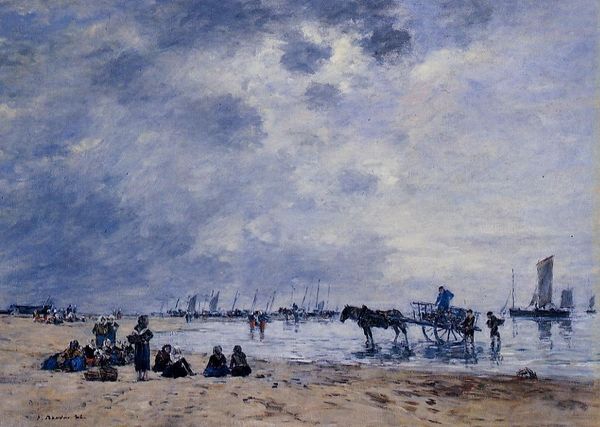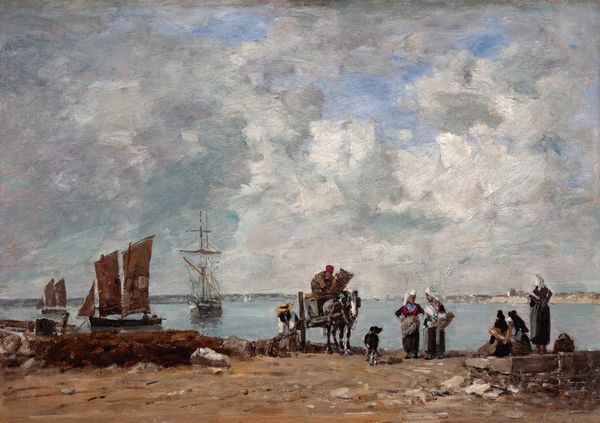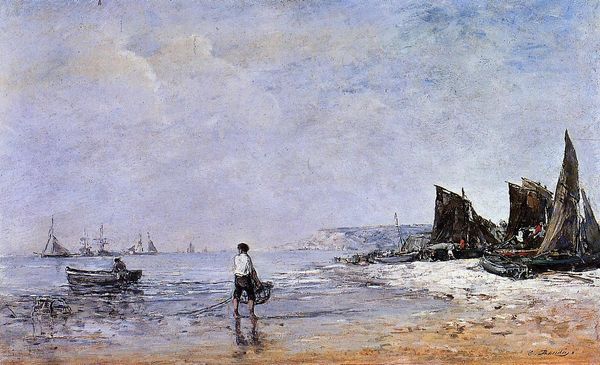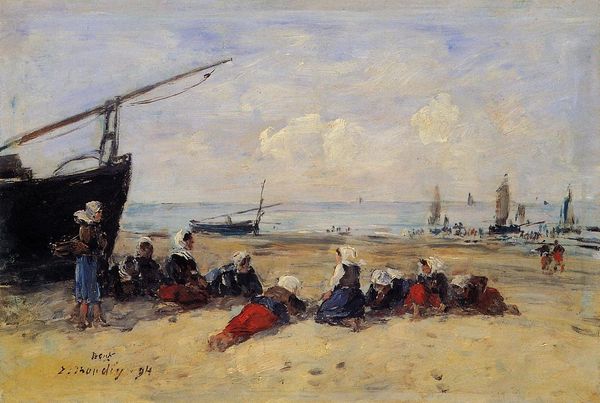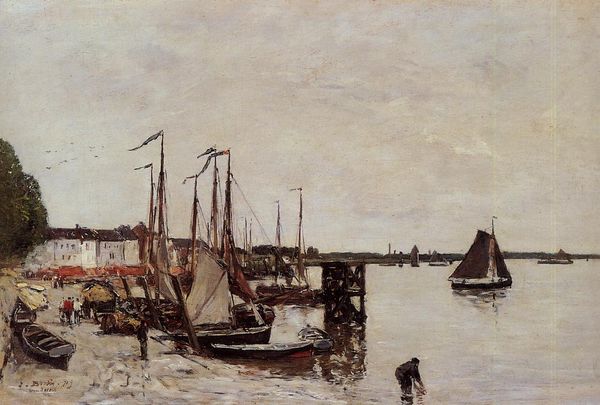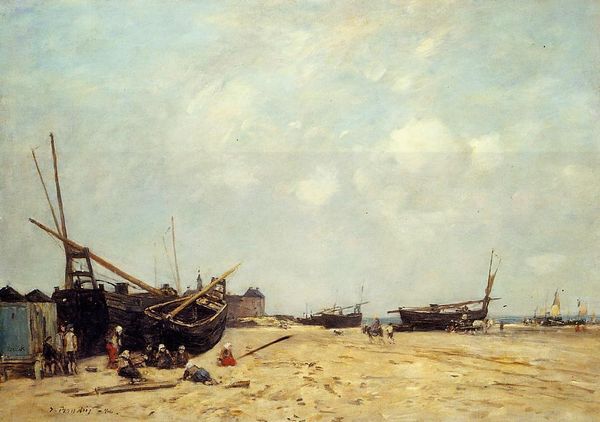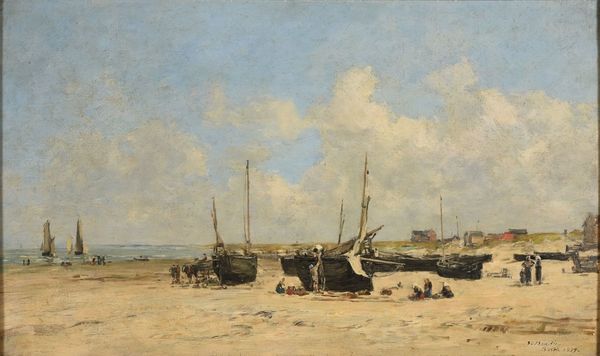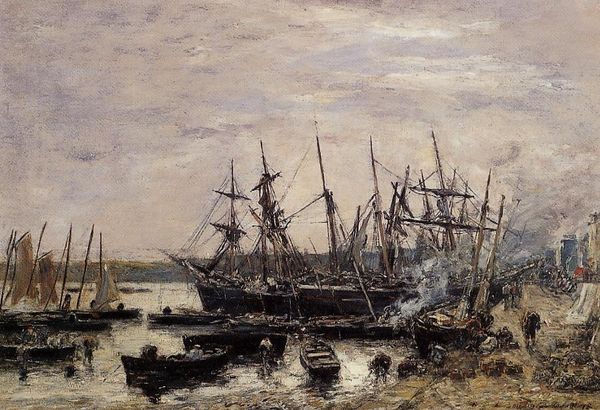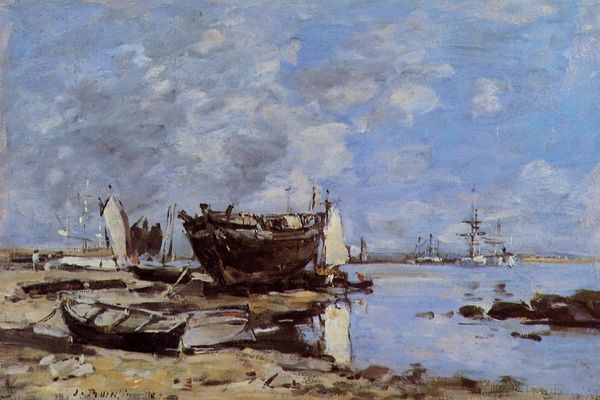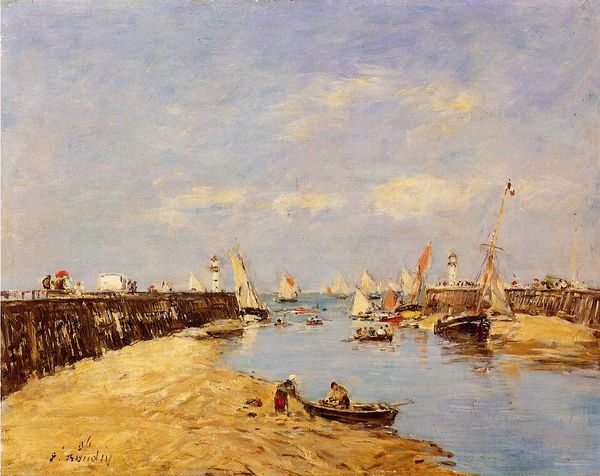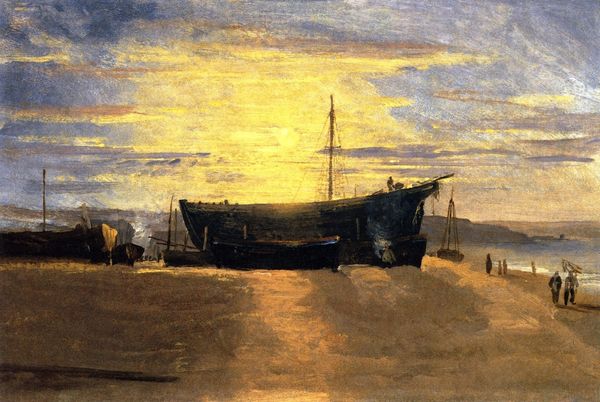
plein-air, oil-paint
#
impressionism
#
plein-air
#
oil-paint
#
landscape
#
impressionist landscape
#
figuration
#
oil painting
#
cityscape
#
genre-painting
Copyright: Public domain
Curator: Let’s take a look at Eugène Boudin’s, “Deauville, the Jetty”, painted in 1890. What strikes you immediately about this Impressionist scene? Editor: The weather! That sky feels so heavy, almost oppressive. There's a distinct chill in the air, despite the beach setting. It gives off a feeling of transience, of a moment caught rather than a lasting idyll. Curator: The sky does dominate. Boudin was actually quoted as saying he specialized in skies, a fact easily grasped here. What’s also important is that he worked *en plein air,* allowing the atmospheric conditions to directly influence his brushstrokes. Those muted tones of grey, ochre, and blue create a very specific atmosphere that echoes older, northern European landscape traditions. Editor: Right, that feeling extends to the people, doesn't it? They are almost spectral figures. What were once spaces reserved for Europe's bourgeois pleasure are depicted here with very little joy. They look more like shadows moving against this dreary backdrop than participants of modern beach tourism. It makes me wonder about the economic realities for folks, their access to the coast and leisure… who is depicted in this picture and who isn't? Curator: It makes me think, too, about the umbrella as a potent symbol of the era's burgeoning industrialism—a necessity of life with increasing air pollution. Its somber appearance almost suggests some kind of uniform—while also marking one as a member of that leisurely upper class. These beach scenes themselves came to embody this duality as industry allowed people to experience the landscape through railway lines, which subsequently degraded through emissions. Editor: Absolutely, it's such a fraught visual, and I love that it’s present in a seaside image. It also really puts Boudin at the threshold of modernity. Curator: Yes, though at first glance, it’s easy to overlook those tensions in favor of its pleasing aesthetics. However, upon closer reflection, we can grasp how its composition, dominated by transient weather and subtly industrial symbols, is actually charged with a specific melancholic quality, typical for this kind of historical tipping point. Editor: Definitely, thank you for the nuanced view of the beach tourism depicted! Curator: Thanks to you too! I'll certainly look at umbrellas in beach scenes differently from now on.
Comments
No comments
Be the first to comment and join the conversation on the ultimate creative platform.
